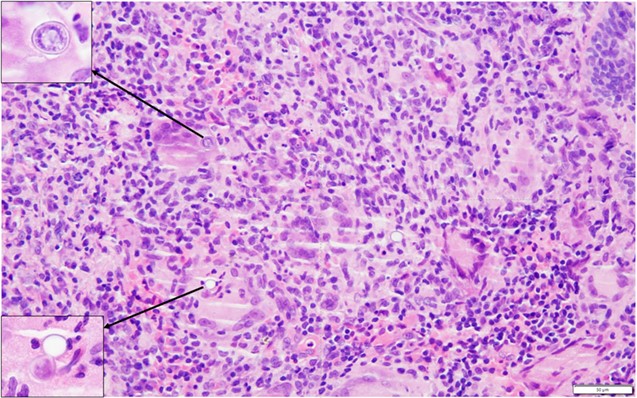August 2023 Case
Contributors: Haibo Wang, MD, Rachna Jetly, MD, MPH, Gordon L. Love, MD
CLINICAL HISTORY
A middle-aged individual with no significant past medical history presented to a Dermatologist with a new onset of non-tender skin lesions on the lips. Physical examination revealed multiple verrucous plaques with some areas of ulceration and crusting. The patient lived in areas around the Mississippi River and had no recent travel history. Lab tests were unremarkable. HIV and syphilis tests were negative. Skin punch biopsies were performed on the lesions and submitted for surgical pathology evaluation and culture for aerobic bacteria, fungi, and acid-fast bacteria. The causative organisms were visualized in routine hematoxylin and eosin (H&E) stained slides (Figure 1) and in Grocott methenamine silver (GMS) stained slides (Figure 2). Five weeks later, the organisms grew on Sabouraud dextrose agar (Figure 3). A lactophenol aniline blue preparation of the mold is shown in Figure 4.

Figure 1. H&E stain

Figure 2. GMS stain

Figure 3 Culture on Sabouraud dextrose agar

Figure 4 Lactophenol aniline blue preparation
Question
Which one of the following is the most likely causative organism of the skin lesions?
A. Histoplasma capsulatum
B. Blastomyces dermatitidis
C. Coccidioides immitis
D. Cryptococcus spp.
Click here for answer and discussion
